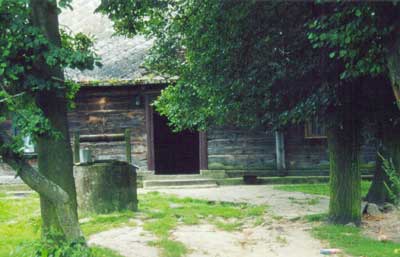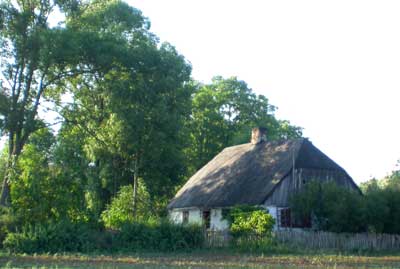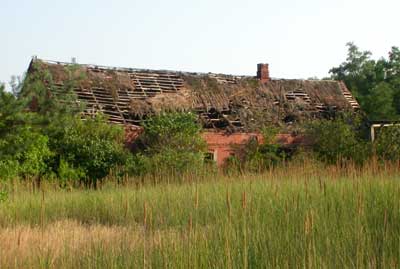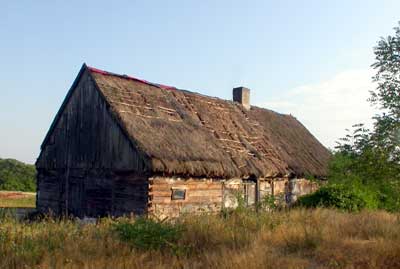 |
 |

|
The Houses |
|
|
The villages were formed from isolated standing houses with the owned farmland around them and sometimes also as "Marschhufendorf" where the houses are located along the street and the farmland forms long strips of land immediately behind each house. |
|

Wooden house with well (turned out to be the former school of Białobrzegi) |
|
|
The settlers of the Vistula valley mainly built their houses from the wood of the huge Vistula poplars with thatched roofs. These wooden houses were warm in winter and cool in summer. Living quarters and barn usually were under one roof, separated by the hall. Each house usually had its own well and an oven for bread that was located in a distance from the house. |
|

House and garden near Piotrkówek - Photo by: Jutta Dennerlein, 2005 |
|
|
The landscape was characterized by the houses enclosed by fruit trees, gardens and bee hives. Fences made from wicker and willow trees that were planted along the lanes and fields added to the picturesque sight. |
|
|
House with thatched roof near Włęcz - Photo by: Jutta Dennerlein, 2005 |
|
|
In the Dobriner Land there were also mainly isolated standing houses, because the land was gained from clearing the woods around the place for a house. Here as well the living quarters and the stables were under one roof. The barn usually was separate from the house. |
|

Brick house with thatched roof near Włęcz - Photo by: Jutta Dennerlein, 2005 |
|
Sources: Albert Breyer: Deutsche Gaue in Mittelpolen |
